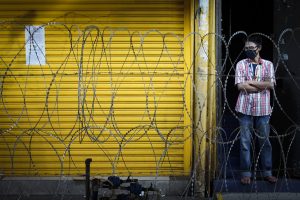On July 12, 2021, Malaysia’s New Economic Policy (NEP), an emblem of developmentalist growth credited with creating a national middle class, marked its 50th anniversary.
The very next day, Malaysian Finance Minister Tengku Zafrul Aziz published a column in Singapore’s Straits Times arguing that the nation whose COVID-19 National Recovery Plan he leads is not a failed state. A couple of days later, Minister of Science, Technology and Innovation Khairy Jamaluddin told Australia’s Sydney Morning Herald that while his government “could have done certain things better,” their vaccination program was on track after procuring more Pfizer supplies.
This international media campaign was, perhaps, understandable. A few days earlier, Bloomberg journalist Daniel Moss had argued that Malaysia is “beset by multiple crises – social, economic, and political – fed and worsened by each other. It may only be a slight exaggeration to invoke the dreaded label of a failed state.” The provocative article led to an outpouring of reactions from disillusioned Malaysians, circulating on WhatsApp and social media channels, where it was seized upon by opposition politicians who used it to highlight the government’s weaknesses under Prime Minister Muhyiddin Yassin. A few analysts worked to debunk the claim, including Sharifah Munirah Alatas, who argued that only a “captive mind” would “cut and paste” the failed state concept from other, more challenging scenarios – like Haiti, say – and apply it uncritically to a nation like Malaysia.
Yet there seems to be a process of decomposition at work in Malaysia, albeit one that might yet be arrested, if not immediately reversed, by the pickup in speed of Khairy’s vaccine rollout. On the very same day as Khairy’s interview, Malaysia’s COVID-19 case numbers reached a new record daily high of 13,215, before falling back in line with its most recent seven-day average of 11,993. Reports emerged that Malaysia’s engine of productivity and economic growth, the urban and industrial conurbation known as the Klang Valley, was at the point of a health system breakdown, its public hospitals treating people on canvas beds in carparks, rubbish strewn all over their floors. According to doctors and other health workers, patients were coming in sicker than ever, and more likely to need ventilators, some dying shortly after arriving. Stories of health worker burnout – aired by civil society coalitions like Projek Bangsa Malaysia – had begun to go viral, and military and private hospitals had stepped in to assist, supported by 100 million Malaysian ringgit ($23.6 million).
There is no sugar-coating the situation: Many Malaysians are either sliding into poverty, while those who were already in poverty before the pandemic are watching their prospects grow even worse. In June, sounding exasperated, former government adviser Muhammed Khalid argued on national broadcaster Astro AWANI that Malaysia has lost its middle class. “There are no more savings,” he said, not for asset accumulation, and not for investing in education. Indeed, many Malaysians have even drawn down their superannuation savings to top up their reduced or non-existent wages, cleaning them out of pension funds for when they grow old.

































